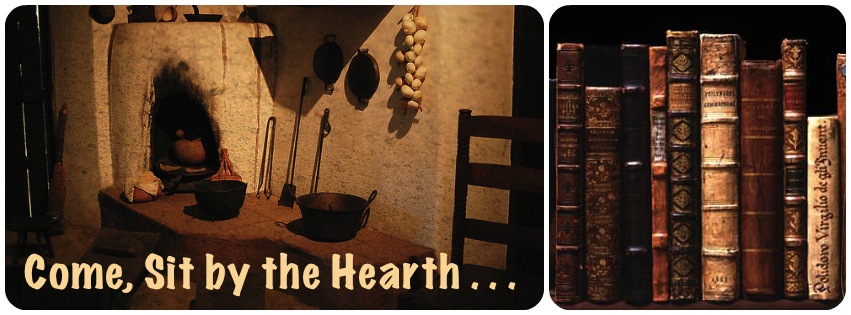A molecular biologist by trade, Ms Larson trained as a writer in university workshops led by Rita Dove and Charles Wright. A scientific sensibility definitely permeates her poetry. She was the winner of the 2010 Yale Series of Younger Poets Competition, and the 2012 Kate Tufts Poetry Award.
Her first collection, published in 2011, is titled Radial Symmetry.
I live more authentically when I write. I pay more attention. I’m more curious. More imaginative. I ask more interesting questions. Writing allows me to approach my life with a greater passion: I risk more; I challenge myself more. When I’m able to spend at least part of my life fully traversing the landscape of my mind, I’m paradoxically able to be more present to the people and the world around me.
Writing offers a tremendous sense of freedom–the freedom to engage, to invent, to shape, to approach, to imbue. At this point in my life, it’s really no longer a choice. It’s impossible for me to think of being without it.
Check out Katherine Lawson on PBS Newshour {here}
The Oranges in Uganda
Walking together, Death and I
are shopping for emicungwa
at night, in the market.
Each careful pyramid of fruit
is stacked on cardboard, illuminated
by candles. Death’s feet are bare
and covered with dirt
from the road.
We talk of small things.
How the mosque and the half moon
stand sentinel
against the bloody sky. That mangoes
will be in season soon.
I tell him I know why
people make love when they
come home from a funeral. Why the pull
of the body echoes the tides,
eyes wide as graves. The way the stamens
of a passion flower spin up,
defy their stem.
Thinking all the while,
fumbling with the prickly shapes of jackfruit
and their sticky sap. Yesu,
the death pulse ringing louder
than talking drums, viral in the blood.
Cloaked in barkcloth, Death
raises his ancestral spear, singing mouth full
of ulcers and steel. He has known the Tombs
of Kasubi,
Home of Kings.
The street children are out
stealing watches again.
There are no stars to behold.
Nkooye, Death says. I am tired.
He rises like a swallow
from the depth of grasses,
leaving a rip no word can cover.
Water Clocks
The singing of the blind school
children and the
Mediterranean’s flat expanse are metaphors
for every kind of solitude made
forgivable by time.
The hillside museum with rows of empty
earthen vessels is full of it. A stillness
so replete
it resembles something like intimacy.
A fullness only partially fathomed.
Like water clocks
and sundials that allowed time to be
translated into elements: droplets, shadows.
And the laughter
of bathers from the spiaggetta.
The train stops just outside of Naples
where I buy a glass
of cold juice squeezed from tangerines
and walk into Pompeii. I couldn’t have
imagined the
magnitude of it. Brilliant pillars flush
with sky. Temples where sunlight
streams white
and seems to radiate from inside
the stones. Certain histories require
forgetfulness.
Others, strict belief. But I think
some histories live us. In the higher cities
of the brain,
even the speechless ones are burning.
Study for Love’s Body
I. Landscape with Yellow Birds
The theories of Love
have become tremulous and complicated.
The way snow falls or Saturn revolves
repeatedly around some distance
where space is nothing
yet still something that separates.
Never mind time. Caterpillars
have turned the fruit trees
into body bags. The children paint
the mandibles of fallen ones with
silver meant for nursery stars.
Without the immense responsibility
of sympathy, these small deaths
are nothing more than
artifice. Like a single magnolia
in a cut glass bowl
we have no idea where
our roots went so suddenly.
II. Architecture in Ruins
Third floor of the doll factory,
ferns suck carbon
and sharper chemicals from air
near the women working.
They’re hunched over tables
of warped wood.
Half of everyone is painting
eyes and lashes on porcelain heads, the rest
are threading hands to sleeves.
Outside in the courtyard
a smattering of doves rise.
Have you ever wanted to
kiss a stranger’s hands?
III. Gardens Without Bats or Moss
Gauguin writes to Theo van Gogh that in his painting he wants to suggest
the idea of suffering—without ever explaining what kind.
IV. In Stone Archways
The light is spilt green milk, which is languorous
as the red monkey Gauguin painted
by the brown body of Anna
the Javanese. At the Chinese Market
I buy two red teacups and a can
of coconut milk. I think—
Gauguin wouldn’t know
how Anna loved that monkey
and sang to him late at night.
Everywhere the sea screams
at me. A great pink slab of octopus arm,
beside it, babies seasoned in orange spices.
Such symmetry! Surely they swam
through the night like thirsty
flowers. I think you had it right
when you said love is the mathematics
of distance. Split like a clam on ice,
I feel raw, half-eaten. I rot
in the cold blue of the ego,
the crushed velvet of Anna’s chair.
Nursery Rhyme from Another Century
All over the neighborhood
sleepwalkers sway
beneath glittering shelves of ice
dressed in cold light,
confounded by doorknobs,
by the sea in their dreams.
Televisions belly-up in the alley,
electrons stripped from trees—
Slow fallout of asbestos clasped
in the nursery walls, the grubby
fists of stars prick
dark like a rash from toxic milk.
Corrosion on spark plugs, leaves
whorled in the back seat
of a car oxidizing green.
And the nursery rhymes
echo in the dark like radio,
a world talking cheerfully to itself
in the endless repetition
of a pink cartoon
she begins to recognize
as the subplot of her life,
the subplot of happiness.
Soon, they say, our houses will be made
entirely of glass. We’ll dance like mannequins—
stiff and flawless
in the blue, fatal light of television.


No comments:
Post a Comment